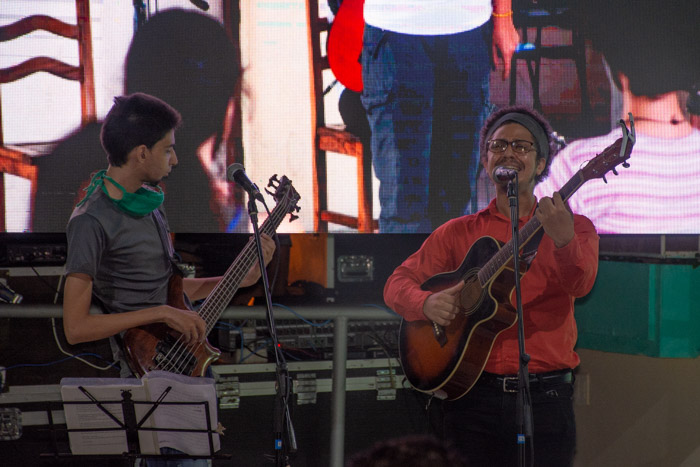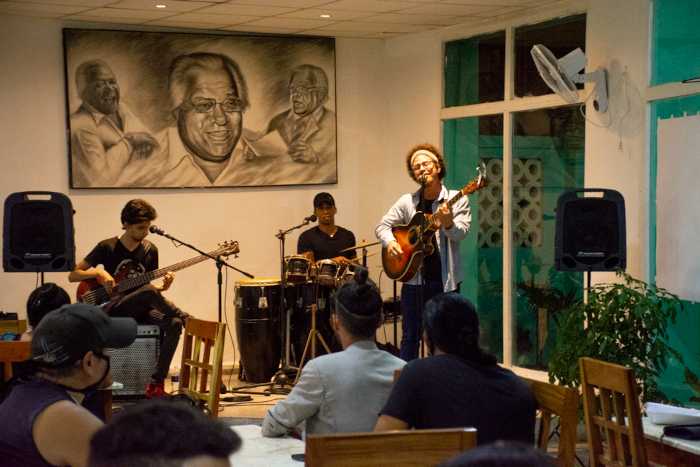CAMAGÜEY.- He walks with the guitar at the ready open to stimuli for his compositions.He was devoted to physics and mathematics and enrolled in Electrical Engineering at the Universidad de Oriente, but after a course of studies a great turn led him to a Bachelor of Philology.
He confesses that he does not regret that change, close to his status as a musician.
Born in the city of Guantánamo and residing in the capital of Camagüey, Pedro Antonio Sánchez Zapata began his career in trova as a guitarist and performer in junior high school, an aspect deeply rooted in his existence and without which he cannot conceive of his life.
He is a member of Golpe a Golpe, the largest sociocultural project of the Hermanos Saíz Association (AHS) in Camagüey, an artistic-literary unit designed primarily to offer functions in hard-to-reach areas.
A fan of reading, at the age of 14 he had already enjoyed books such as The Century of Lights.
He composes at any time and in dissimilar places: from home to walking or on a bus. He then takes the cell phone and creates the sketch of the letter.

Concert to Fidel
His inspirations include, among other themes, love, heartbreak, social context and philosophical aesthetics, in a combination of poetry and prose.
Before he was 20 years old, he made his first tour, which was a luxury one, with Raúl Torres.
Pedro remembers that he and his friend Jorge Barret, in a concert of the singer-songwriter in Guantánamo, asked him to enter for free, because they did not have money for admission.
Torres invited them, in a gesture of goodwill, to accompany him as interpreters on a tour of eastern provinces.
Pedro already had the first experience of him on a DVD entitled Caminando, with six songs, and accompanied in four by the Rumbatá group from Camagüey, and in two by Julio Pablo Santana and Darío Valdespino.
He acts as a soloist or in the trio of which he is the director, and which is also made up of Darío Valdespino (bass) and Junior Agüero (percussion).
He cultivates a wide range of genres, such as son, conga, guaguancó, conga, funky, and kizomba (of African origin).

Canto Adentro Inauguration
He also lived in Baracoa and Santiago de Cuba, and to this last city he dedicated a conga that is one of his favorite creations:
And celebrating with all the 'leather' /
That Santiago shook /
From the Alameda to the Heights of Quintero /
Scratching hard the clean kiss of the earth.
(Fragment).
Translated by Linet Acuña Quilez



